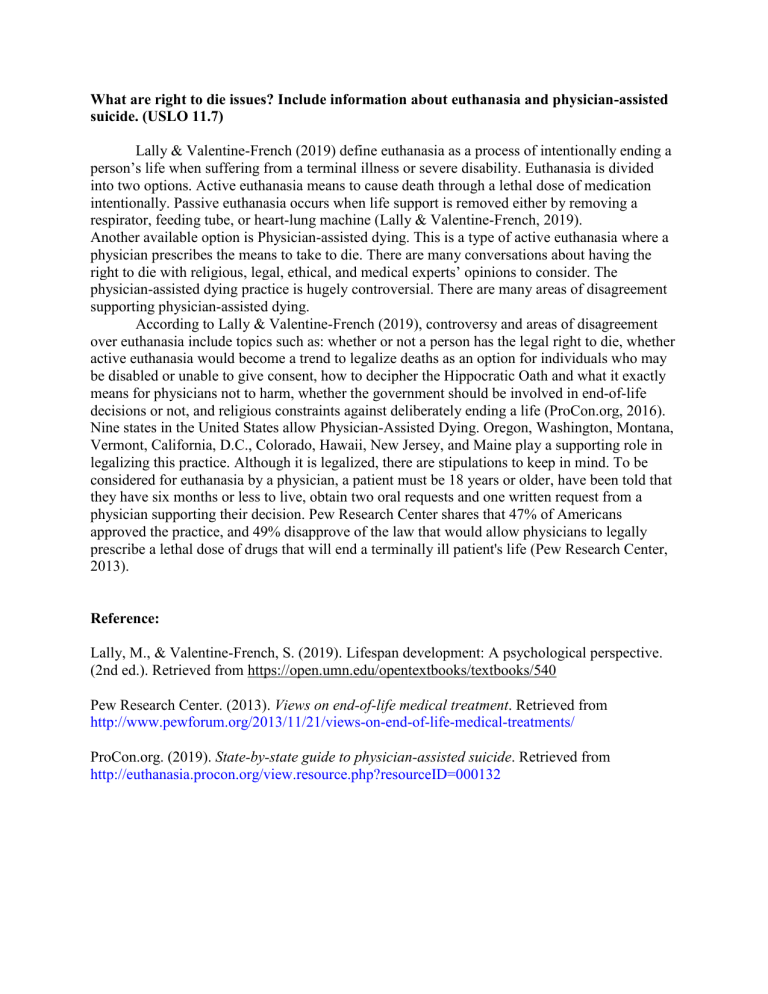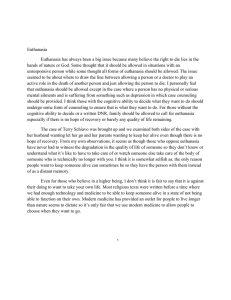
What are right to die issues? Include information about euthanasia and physician-assisted suicide. (USLO 11.7) Lally & Valentine-French (2019) define euthanasia as a process of intentionally ending a person’s life when suffering from a terminal illness or severe disability. Euthanasia is divided into two options. Active euthanasia means to cause death through a lethal dose of medication intentionally. Passive euthanasia occurs when life support is removed either by removing a respirator, feeding tube, or heart-lung machine (Lally & Valentine-French, 2019). Another available option is Physician-assisted dying. This is a type of active euthanasia where a physician prescribes the means to take to die. There are many conversations about having the right to die with religious, legal, ethical, and medical experts’ opinions to consider. The physician-assisted dying practice is hugely controversial. There are many areas of disagreement supporting physician-assisted dying. According to Lally & Valentine-French (2019), controversy and areas of disagreement over euthanasia include topics such as: whether or not a person has the legal right to die, whether active euthanasia would become a trend to legalize deaths as an option for individuals who may be disabled or unable to give consent, how to decipher the Hippocratic Oath and what it exactly means for physicians not to harm, whether the government should be involved in end-of-life decisions or not, and religious constraints against deliberately ending a life (ProCon.org, 2016). Nine states in the United States allow Physician-Assisted Dying. Oregon, Washington, Montana, Vermont, California, D.C., Colorado, Hawaii, New Jersey, and Maine play a supporting role in legalizing this practice. Although it is legalized, there are stipulations to keep in mind. To be considered for euthanasia by a physician, a patient must be 18 years or older, have been told that they have six months or less to live, obtain two oral requests and one written request from a physician supporting their decision. Pew Research Center shares that 47% of Americans approved the practice, and 49% disapprove of the law that would allow physicians to legally prescribe a lethal dose of drugs that will end a terminally ill patient's life (Pew Research Center, 2013). Reference: Lally, M., & Valentine-French, S. (2019). Lifespan development: A psychological perspective. (2nd ed.). Retrieved from https://open.umn.edu/opentextbooks/textbooks/540 Pew Research Center. (2013). Views on end-of-life medical treatment. Retrieved from http://www.pewforum.org/2013/11/21/views-on-end-of-life-medical-treatments/ ProCon.org. (2019). State-by-state guide to physician-assisted suicide. Retrieved from http://euthanasia.procon.org/view.resource.php?resourceID=000132



